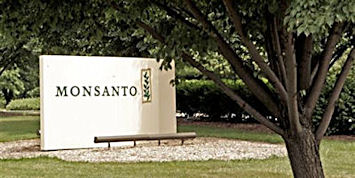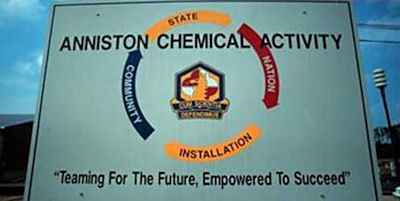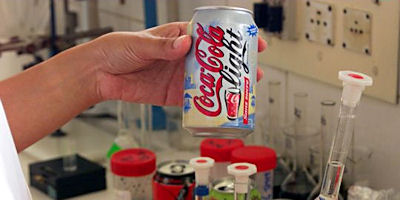This translation of 'Monsanto, un demi-siècle de scandales sanitaires' has received the full authorization to be published on anglophone sites by Le Monde and the author, Soren Seelow.

The giant U.S. agribusiness Monsanto was found guilty on Monday Feb. 13, after being sued by a small farmer from Charente who had been poisoned by a herbicide. This event is a first in France. On the scale of the history of the one-hundred-year-old multinational, this sentence constitutes just one more episode in an already long record of court procedures.
PCBs, Agent Orange, dioxin, GMO, Aspartame, growth hormones, herbicides (Lasso and Roundup) ... a number of products that have made the fortune of Monsanto, have been marred by health scandals and trials sometimes leading to their prohibition. But nothing has so far hindered the irresistible rise of this former chemical giant who converted back to biogenetics and has mastered the art of lobbying. Portrait of a multinational multi-recidivist.
A chemical giant ...explosive
Since its creation in 1901 in St. Louis, the small producer of saccharin that became one of the leading seed producers on the planet, has continued to make headlines. After the Second World War, the accidental explosion of a Monsanto plastics factory caused by a French freighter loaded with nitrate, which caused 500 deaths in Texas City in 1947, has remained in history as one of the first disasters of the chemical industry.
Two years later, it was the turn of a second plant of the firm, in Nitro, Virginia, to go up in smoke. This time, the responsibility of the company was engaged. More than two hundred workers developed chloracne, a skin disease as rare as it is severe, says Marie-Monique Robin, winner of the Albert Londres Prize, in her documentary The World According to Monsanto.
The accident reveals that the flagship brand, the herbicide 2,4,5-T, contains high levels of dioxins, highly toxic and carcinogenic, a composition comparable to that of polychlorinated biphenyls (PCBs). The first study suggesting the potential danger of dioxin was known to Monsanto in 1938: the commercialization of herbicide would continue for nearly another forty years before it was banned in the 1970s.
Monsanto, who led the Nitro plant between 1934 and 2000, has also been the subject of a legal action filed in 2007 by 77 people in Virginia suffering from cancer, who accused the company of having dumped dioxins "illegally" in the vicinity of the plant.
- PCBs: the trial of shame

In 2001, 3,600 inhabitants of the city of Anniston, Alabama, attacked Monsanto for PCB contamination. According to a report, declassified by the U.S. Agency of Environmental Protection (EPA), Monsanto for almost forty years dumped thousands of tons of contaminated waste in a stream and an open garbage dump in the heart of a black neighborhood in the city.
The way The Washington Post reported the story is instructive:
"Monsanto documents -- many emblazoned with warnings such as "CONFIDENTIAL: Read and Destroy" -- show that for decades, the corporate giant concealed what it did and what it knew.In 1966, Monsanto managers discovered that fish submerged in that creek turned belly-up within 10 seconds, spurting blood and shedding skin as if dunked into boiling water. They told no one."
In 1975, a study conducted by Monsanto showed that PCB causes tumors in rats. The multinational decided to change the terms of "slightly tumorigenic" to "does not appear to be carcinogenic." "We can not afford to lose a single dollar " – thus ends one of the memos by The Washington Post.
Monsanto was finally convicted in 2002 of having polluted "the territory of Anniston and the blood of its people with the PCB". The firm was ordered to pay $ 700 million in damages and to guarantee the cleaning-up of the city. No legal action was brought against the company officials.
In February 2007, The Guardian revealed that the agrochemical giant applied the same methods on multiple sites in Britain between 1965 and 1972. The newspaper had access to a government report showing that 67 products, including Agent Orange, dioxin and PCBs, have been identified in a quarry in Wales. In France, the manufacture and use of PCBs have been banned since 1987.
- Agent Orange: convinced of "poisoning"
During these same years, between 1961 and 1971, Monsanto produced Agent Orange, made up from the herbicide 2,4,5-T, whose dangerousness has been widely known ever since the explosion of the Nitro plant. This defoliant was massively dumped by U.S. aircraft over Vietnamese forests during the war. The consequences are still felt today, with many cancers and birth defects occurring in Vietnam, as well as various effects felt by many U.S. veterans.
In the 1970s, the Vietnam veterans opened a class action against the manufacturers of Agent Orange. Monsanto, alongside six other companies, was found to be the major guilty party in a lawsuit concerning damages for poisoning. In 1987, the seven manufacturers of Agent Orange were sentenced to pay $ 180 million to a compensation fund to U.S. soldiers.
During the trial, Monsanto presented scientific studies showing no link between exposure to dioxin and the cancers suffered by many veterans, in order to dismiss their action. It was demonstrated in the early 1990s that the studies based on the consequences of the explosion at the Nitro plant in 1949 were biased.
This scientific fraud is confirmed by the National Research Council, which found that Monsanto's studies "suffer from misclassification between those exposed and not exposed to dioxin, and that this scientific fraud is confirmed by the National Research Council, and that they were biased in order to obtain the desired effect. "The case will be brought up again in 1990 by Greenpeace and the researcher Joe Thornton in a report entitled Science for Sale.
- Is Roundup herbicide toxic?
Do you remember the advertising and the good dog Rex: "Roundup does not pollute either the earth or Rex’ bones." It caused Monsanto to be convicted twice, in the United States and France, for false statements placed on the packaging of the total herbicide (which eliminates all plants).
In 1975, the company launched Roundup, a very powerful herbicide presented as "biodegradable" and "good for the environment". In 1996, the New York prosecutor condemned Monsanto which was fined 50,000 dollars and forced to withdraw statements deemed misleading. In January 2007, the firm was condemned in France for the same reasons ... 15,000 euros in fines. Roundup is today the world's best selling herbicide.
Several corroborating studies say however that the pesticide which is Monsanto's flagship - and its active ingredient, glyphosate - is potentially teratogenic, that is to say responsible for fetal malformations. One of them, published late 2010 in Chemical Research in Toxicology, shows that direct exposure of amphibian embryos at very low doses of glyphosate herbicide results in malformations.
Monsanto refutes these conclusions: "Glyphosate has no harmful effects on reproduction in adult animals and does not cause malformations in the offspring of animals exposed to glyphosate, even at very high doses," the firm says on its website.
Monday, February 13, the rapporteur of the Supreme Court has dealt another blow to Monsanto's flagship product: he directed the Ministry of Agriculture to analyze the toxicity within six months and decide once again whether the marketing of the pesticide should be authorized.
>> News: In Argentina, people exposed to the herbicide complain of multiple health problems.
- Herbicide Lasso : off sale

The sentence that struck Monsanto’s second herbicide on Monday 13 February is more significant. French judges have in effect held that the manufacturer of crop protection products must "fully" indemnify the plaintiff, Paul Francis. This farmer is now working only part-time, suffering from chronic fatigue and persistent headaches. Doctors consider his central nervous system was affected as a result of inhalation of Lasso.
Monsanto appealed. "Monsanto's products comply with safety requirements in place at the time of the placing on the market. [The company] has a very strict policy regarding the scientific assessment of safety of plant protection products", the company responded in a statement.
Still considered dangerous, this herbicide has however been banned in Canada since 1985, in Belgium and the UK since 1992 and in France since 2007 (it was authorized on December 31, 1968).
- Growth Hormones: scandal on Fox News
In early 1990, Monsanto launched their first product derived from biotechnology: Posilac, the recombinant bovine growth hormone (rBGH), genetically engineered hormone designed to increase the production of milk in cows by nearly 20%. This hormone leads to mastitis, inflammation of the udder, which forces farmers to treat their cows with antibiotics, which one then finds traces of in the milk. This miracle product is now banned everywhere except in the United States. (emphais added)
A Canadian documentary, The Corporation, talks about how Monsanto pressured Fox News (Murdoch) to prevent it from disseminating a survey revealing the dangers of Posilac in 1997. This excerpt illustrates the particularly aggressive lobbying this company has been paying for: not only was the investigation never released, but its authors were dismissed by Fox News.
- GMO: Law suits galore

Between 1995 and 1997, GM soybean Roundup Ready, Roundup Ready canola (rapeseed) and Roundup Ready cotton, all three resistant to the herbicide Roundup, received marketing authorization. Since its patent on glyphosate has expired today (marketed as Roundup), the company has decided to change its strategy and undertake the patenting of life forms. It currently produces 90% of GMOs in the world.
This is a virtual monopoly that the firm defends dearly. During the 2000s, Monsanto will accuse hundreds of farmers in courts of having used "fraudulently" its patented transgenic seeds, that is to say that they are accused of having replanted them.
Monsanto claims the rights to intellectual property on some seeds. This did not prevent it from itself being prosecuted for acts of "biopiracy". In August 2011, the National Biodiversity Authority of India announced that it had filed suit against the company, accusing it of having developed a genetically modified eggplant (BT-brinjal) from local varieties without having sought the authorization.
Another conviction, in the United States this time. Monsanto agreed in 2010 to pay a $ 2.5 million fine for having sold unauthorized GMO cotton. The Environmental Protection Agency (EPA) accused the company of having violated the law which prohibits the sale of genetically modified cotton in parts of Texas, where these varieties had been banned for fear of pesticide resistance.
- Aspartame: towards a new health scandal?

Monsanto states clearly on its website: after having been a leading producer in the 1980 and 1990, the company has no longer been producing aspartame since 2000. The company still insists, however, on the fact that this most widely used sweetener "causes no disease."
However, recent studies have demonstrated an increased risk of premature births in women who use this product. The European Food Safety Authority was even invited in May by the European Commission to plan a complete reassessment of the safety of aspartame in 2012.
In the columns of Le Monde, Yann Fichet, director of corporate affairs of the French subsidiary of the company, is concerned that Monsanto has become "an attractive name for those who want to get a large audience." The company is trying to erase its battered reputation by stressing on its site the principles of its ethical codes: "Integrity", "Dialogue", "Transparency", "Sharing", "Utility" and "Respect". Contacted by Le Monde.fr, Monsanto had not responded at the time this article was published.
Original Source (In French): Le Monde
Translated to English for Axis of Logic by Siv O'Neall
Read her Biography and more articles
by Siv O'Neall on Axis of Logic.
Siv O'Neall is an Axis of Logic columnist, based in France. Her insightful essays are republished and read worldwide. She can be reached at siv@axisoflogic.com.